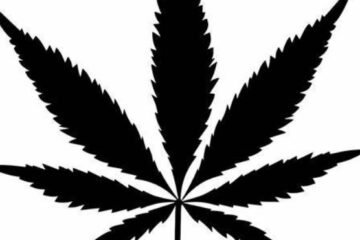Legalizing medical marijuana (MMJ) is changing the landscape of pain management, significantly reducing payments from opioid manufacturers to physicians. A recent study sheds light on this trend, suggesting that cannabis is increasingly perceived as a viable alternative to opioids, particularly for chronic pain treatment.
Medical Marijuana vs. Opioids: A Financial Pivot
Research from institutions like the University of Florida and SUNY Buffalo reveals that legalizing medical cannabis reduces direct payments from opioid companies to physicians. These payments, often in the form of consulting fees and conference travel, have been a contentious aspect of the pharmaceutical industry.
The study’s authors point to evidence that cannabis is not only seen as a substitute for opioids but is prompting a financial recalibration. As states adopt medical marijuana laws, opioid manufacturers appear to reduce their efforts to incentivize doctors, a move that could signal a paradigm shift in how pain management is approached.

Community-Level Impacts and Demographic Trends
Interestingly, the financial impact of MMJ legalization isn’t uniform across all communities. The study found:
- Higher reductions in payments were noted in areas with larger white populations, less affluence, and a higher proportion of working-age residents.
- Regions with lower incomes often have higher rates of chronic pain and opioid misuse, making them critical areas for cannabis substitution.
- Black patients, less likely to be prescribed opioids, and younger populations may also contribute to the observed trends due to openness to alternative treatments.
These findings highlight how social and economic factors intersect with healthcare practices, shaping the outcomes of MMJ policies.
A Broader Look at Prescription Patterns
Medical marijuana’s influence extends beyond financial dynamics, affecting prescription trends directly. Data from 2015 to 2017 shows that states with MMJ laws experienced a decline in opioid prescriptions compared to those without.
In non-MMJ states, opioid versus non-opioid prescription ratios remained constant. However, in MMJ states, the ratio dropped from 1.57:1 to 1.52:1, reflecting a meaningful shift in medical practice.
Decreases in Opioid Overdoses and Deaths
Separate studies have linked cannabis legalization to a drop in fatal opioid overdoses. One report suggests that jurisdictions with legalized recreational marijuana saw a decrease of approximately 3.5 opioid-related deaths per 100,000 people.
States that legalized cannabis earlier in the opioid crisis observed even greater benefits, indicating that sustained access to legal marijuana may contribute to long-term improvements in public health.
The Broader Implications of Cannabis Legalization
The growing body of evidence suggests that cannabis plays a substantial role in reshaping pain management. Key findings include:
- Reduced dependence on opioids: Chronic pain patients using medical marijuana report lower levels of opioid reliance and reduced pain.
- Statewide impacts: In Utah, MMJ availability decreased opioid use and overdose deaths across the state.
- CBD’s role: Legal access to CBD alone has led to notable declines in opioid prescriptions, further supporting cannabis’s versatility in healthcare.
One study even linked MMJ to reduced usage of prescription drugs for various conditions, underscoring its potential as a disruptive force in pharmaceuticals.



